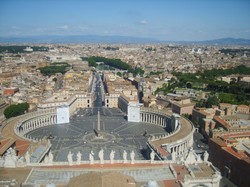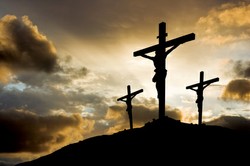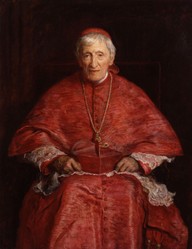The recent decision of the Anglican church to appoint women bishops was hailed as the first time that women have been bishops since Jesus established the rank of bishop. Sorry, no way. Jesus did not establish the rank of bishop, it grew out of the apostolic ministry during the first century. The first century ministry was different from the ministry now. The present ban on women arises not from Jesus, but from the practice of Roman society in the first half of the first millenium.

Ministry in the church:women bishops
by frankbeswick
The long awaited decision to have women bishops is major progress.
Ministry in the early church
It is not widely known that Jesus never did any theology. He walked around Palestine, challenging evil, urging repentance and healing the sick; he taught a newer, gentler understanding of Israel's God and preached reform of the law to centralize love. He left a community centred on baptism and Eucharist, and this community treasured the memoria Jesu, the recollection of his powerful, charismatic presence and life, and the realization that he was still with them. Theology arose as a human response to Christ. It is a human construct, done hopefully under divine inspiration, it underwent a long evolution over the first few centuries, and it is still evolving.
The ministry underwent a process of development, particularly over the first century. The original community was 120 strong. All were disciples, but of these twelve apostles were the core, but they reduced to eleven after Judas' death, but became twelve again with the appointment of Matthias to take Judas' place [Acts of the Apostles 1]. It seems that originally they wanted a governing council of twelve, but this principle fell out of use and was abandoned.
Three changes began to happen. Firstly,Acts 6 tells us that as the church expanded in size it became necessary to appoint seven deacons to deal with administrative matters, specifically the food distribution to widows. Deacon meant servant, but a servant on a level higher than a slave. These were lower in rank than apostles, but this is the first time that the ministry divided into two ranks.
Secondly, the number of apostles grew. Originally the word apostle denoted one of the twelve, but it came to mean anyone who had met the risen Lord and who could testify from personal experience. Paul was an apostle in this sense.
Thirdly the church began to expand beyond the bounds of the original community, and this necessitated a rethinking of structure. Note that at this time two ranks are missing: bishop and priest.
 | When Women Were Priests: Women's Leadership in the Early Church and the Scandal of Their Subordin... Vital to the current debate about women and the Church, this book discloses that women played prominent leadership roles in Jesus' own ministry and in the early Church - as prop... Harpercollins / |
 | Women PriestsDarton,Longman & Todd Ltd / |
Later evolution
As Paul along with other apostles spread the Christian church round the Mediterranean, communities were established.The apostles modelled their communities on the Jewish synagogue. This was a body controlled by elders, older and wiser males who held some repute in the community. In Jewish society there were no women elders, and Graeco-Roman society was no better. At that period few if any women were blessed with an education and so would not have been able to perform any teaching role that the elders had to perform. Some communities had prophets, but they were considered lower in rank than apostles. Elders would have been assisted by deacons. but we also note the existence of deaconesses. Traditionalists like to play down their role, and when I raised the issue with my superior at seminary he brushed it off with the claim that they merely arranged the flowers. But I was unconvinced. Another priest told me that they merely had the role of carrying the Eucharist to women who could not attend services. Maybe so, maybe not, history is unclear, but they were in rank equal to male deacons.
However, during the first century we find ministerial roles evolving. Elders, known as presbyteroi, began to divide into two ranks: presbyteroi and episcopoi, priests and bishops. Note though, that the word priest is not a translation of presbyteros, elder, and this change reflects the growing understanding that the role of priest was a necessary element in Christianity. Israel had had priests, so Christians must carry on the tradition, and the elders took the role. But some were of higher rank, and these epsicopoi became bishops. Even now episcopal is a term used to describe things to do with bishops. Originally the bishopric was a team ministry, but in the early second century Saint Ignatius of Antioch was promoting the idea of the monarchical episcopate, where one bishop rules the local church. He was, of course, the local bishop. No self interest here then!
As there were no women elders, soon there came to be no women priests and bishops. The pastoral letters of Paul, almost certainly by a writer later than he, say that women should keep quiet in church. But I suggest that this measure was motivated by a reaction against a sect from Anatolia [modern Turkey] called the Montanists, whose leader was assisted by two prophetesses who practised ecstatic prophecy. A bit noisy!
Yet were there no women elders at all? The case is not clear. Paul, wrongly called a misogenist, had a good friend called Priscilla, who was entrusted with the role of educating the Jewish convert Apollos in the faith. She seems to have been a strong minded, competent woman and a powerful figure in the church community.
There is also the issue of Junia, an apostle rather than an elder! Some feminists observe that the name is translated in English as Junias, a male name, but that it could be Junia,a female one. Unfortunately, this issue cannot be resolved. The name occurs once in Romans 16, but it is in the accusative singular case, Junian, which is the same for the male Junias and the female Junia. Case not proven either way.
Women in the church
 | Great Women In Christian History: 37 Women Who Changed Their World Read the heart-touching stories of 37 remarkable women who changed the world through Christ's unique calling on their lives. Enriching and motivational, this collection reveals ... |
 | Gladys Aylward: The Small Woman with a Great God |
What is behind the ban on women priests?
Behind the ban women priests and bishops is Roman society. For the Romans, men ruled and women were ruled. Simple! If men ruled the state, they also ruled the church. When the church became established, the imperial Roman power structure was introduced by osmosis into the church. Bishops were important people in Roman society after Constantine. Women, the thinking went, cannot be important in society, hence they cannot be bishops, and from that the natural evolution was that they cannot be priests. So half the church were excluded from the ministry.
The intrusion of a non-Christian value system into Christianity is not acceptable. We regard Christ as the authoritative source of our values, not the ancient Romans, who murdered, domineered and enslaved people, practices alien to Christ. Thus if we do not accept the Roman value system, we do not accept conclusions or practices derived from it, so the ban on women's ministry must be accounted unacceptable and unchristian.
We also need to be rid of the appallingly bad theological excuses for not having women priests and bishops, which bring theology into disrepute.The idea that women cannot be priests because Eve tempted Adam is ludicrous. Eve, if you take Genesis literally, gave Adam the fruit, and he then passed the blame onto her. But God was having none of it and blamed the pair of them.
Secondly, an excuse is that only the apostles were present at the last supper, when the Eucharist was instituted, so Jesus would have wanted only men to consecrate it, so only males can be priests. Those who make this excuse should pay more attention to Scripture. Mark 14,13-15 has Jesus sending two disciples to ask a man "Where is the room for me to eat the Passover with my disciples?" Note, if only the twelve were present he would have said apostles, not disciples, so this implies that the whole band were there, 120 of them. This leads to a second overlooked point. Jesus told the two disciples he was sending that they would be shown a large upper room. Why a large one if there were only thirteen of them? This suggests that the whole band were present, not a small selection. The argument against women priests from the last supper is rather weak.
The idea that the priest represents Christ, who was male, so only a male can represent Christ is weak. Jesus had to be male or female, and in that society no one would have listened to a female, so he was sent as male. But his masculinity is irrelevant. What is important is his humanity. Furthermore, some Christian thinkers have suggested that the risen Christ has transcended gender identity and so is neither male nor female. As the priest represents the risen Christ, a male is not necessary:either male or female can do the job of priest
Ministry in the church
 | Country's 20 Classic Gospel: Songs of Century It seems that every generation of country singers is able to move us with profound performances of gospel songs. Many of country music's stars are guided by faith, which is why ... |
Conclusion
I salute the Church of England for its courageous decision to ordain women bishops, but there is a long way to go before all churches use women properly. Women are the backbone of many churches, and do great work. The sooner that all churches of the episcopal tradition have women bishops the better.
You might also like
Who was JesusTo understand Jesus you must realize that he was a mystery that theology trie...
Doctor of the Church: John Henry NewmanThe thirty eighth doctor of the church is Cardinal Newman, an English religio...



 TheThousand Year Gardenon 11/26/2025
TheThousand Year Gardenon 11/26/2025
 Women of the Gospelson 10/11/2025
Women of the Gospelson 10/11/2025
 Religious Gardenson 08/25/2025
Religious Gardenson 08/25/2025
 Doctor of the Church: John Henry Newmanon 08/03/2025
Doctor of the Church: John Henry Newmanon 08/03/2025



Comments
Eventually we will get a female archbishop, but I suspect not in my time.The decision on appointment will be taken by the monarch on advice from his ministers.
Online sources identify the British monarch and the archbishop of Canterbury as the respective supreme governor and the most senior cleric in the Church of England.
Will the acceptance of women as bishops imply or involve a female archbishop? Would that decision be made by monarch, archbishop, bishops or someone else?
Your suggestion about the Montanist prophetesses, Derdriu, makes sense and is probably correct, but currently there is no firm evidence to prove it.
It is a photo taken on the dome of St Peter's. Rome.
frankbeswick, Thank you for product lines, pretty pictures and practical information.
What is the image to the left of your title?
The image of the Montanist leader with two prophetesses makes me think somewhat of the sibylline oraces, priestesses and prophetesses. Would the Montanists have drawn on such ancient Greek traditions perhaps persisting in their area of modern-day Turkey?
Thanks, Lindylou. Not all scriptural statements are absolute rules for all time. For example the rule about women covering their hair in church while men take their hats off applied in a society where women signaled their social rank by hairstyle and men did so by headdress, so signs of status were to be dropped before coming before God. so I suggest that the rule against women speaking in church is not for all time, and my church breaks it by having women readers and in my local one choir mistress. But the ultimate authority in the church is Christ acting for the Father and working through the Holy Spirit. Currently the spirit is calling women to the ministry. It is wrong to prevent their fulfilling their calling.
In August this year my second son, Peter, will be married in front of a female minister. She felt that she had to ask whether neither of the couple objected to the celebrant being a woman, and of course they did not.
Those who argue that the last Supper was an exclusively masculine affair might observe that the Last Supper story starts with a challenge to gender typing. Jesus was obviously keeping the location secret from his enemies, so he sent two apostles to prepare the meal. They were to be led to the place by following a man carrying a jar of water, very noticeable, as it was women's work. This was simple subterfuge, but it demonstrates that gender roles did not matter to Jesus.
Excellent informative article. Let's hope women find their proper place in religious hierarchy in all religions.
That's a travesty. You should have had many more than that!
Thanks, both of you. I have not had an editor's choice before.